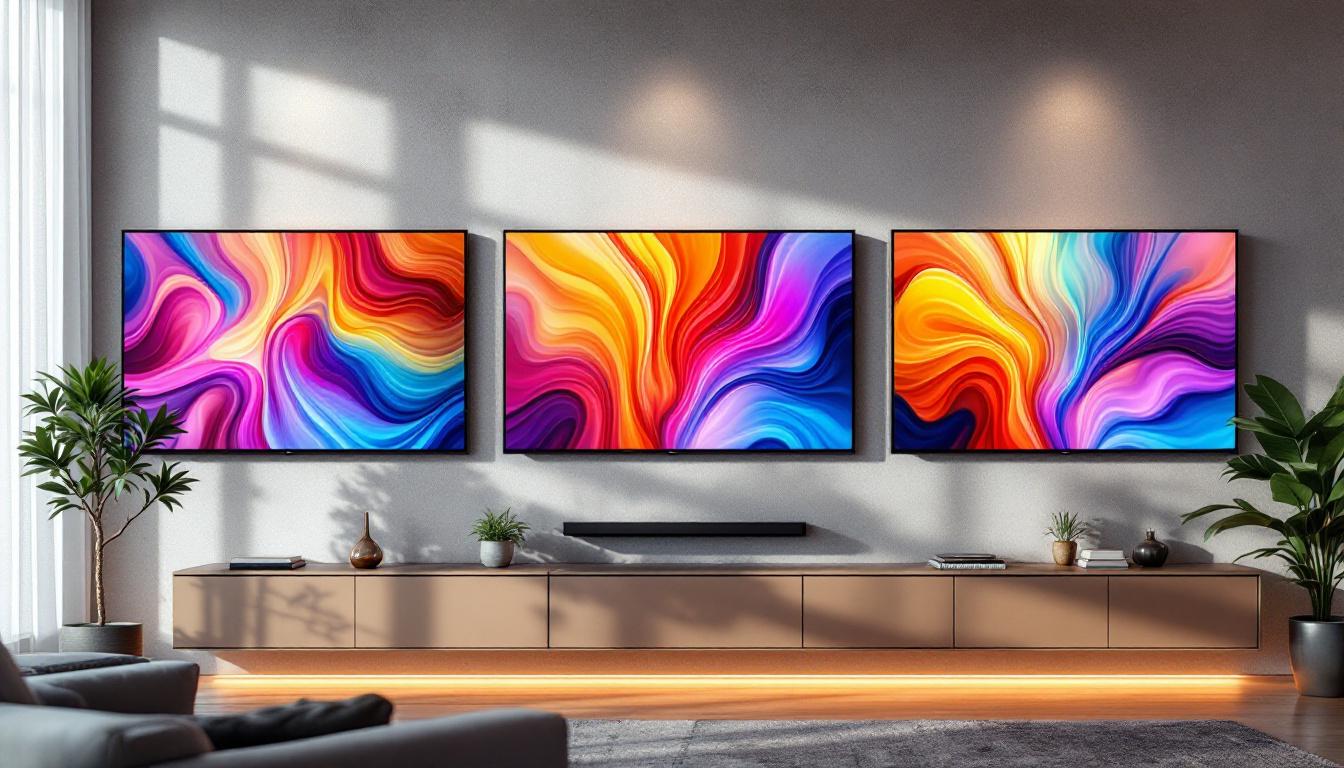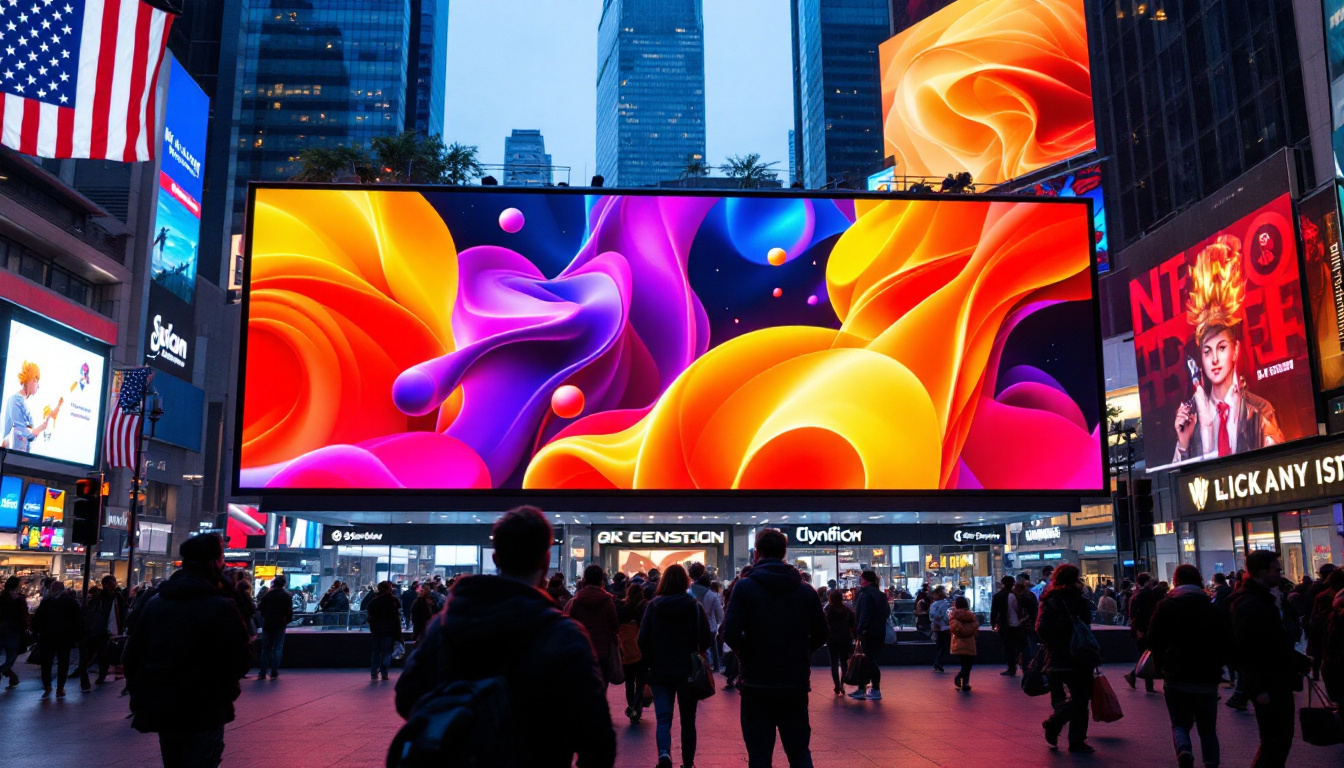In the world of modern display technology, the terms LCD and LED are frequently used interchangeably, leading to confusion among consumers. Understanding the differences and functionalities of these technologies is crucial for making informed purchasing decisions. This article delves into the intricacies of LCD panels and LED displays, exploring their mechanics, applications, and the advantages they offer in various settings.
Understanding LCD Technology
Liquid Crystal Display (LCD) technology has revolutionized the way images are presented on screens. It utilizes liquid crystals that modulate light to create images. This technology is prevalent in televisions, computer monitors, and smartphones due to its efficient performance and compact design.
How LCD Works
At its core, an LCD panel consists of several layers. The primary components include a backlight, liquid crystal layer, and color filters. The backlight, typically made of fluorescent tubes or LEDs, provides the necessary illumination. The liquid crystals are sandwiched between two polarizing filters. When an electric current passes through the crystals, they align in such a way that they either block or allow light to pass through, creating images.
The color filters play a vital role in producing the desired hues. By combining red, green, and blue light, the LCD can display a wide spectrum of colors, making it suitable for various applications, from gaming to graphic design. Additionally, the precision in the arrangement of these color filters is crucial, as even minor discrepancies can lead to color distortion, affecting the overall visual output. This is why high-quality LCDs often undergo rigorous calibration processes to ensure that they meet industry standards for color accuracy.
Advantages of LCD Displays
LCD displays offer several advantages that contribute to their widespread adoption. Firstly, they are energy-efficient compared to older technologies like cathode ray tubes (CRTs). This efficiency not only reduces electricity bills but also minimizes heat generation, making them safer to use. Furthermore, the longevity of LCD screens is notable; they can last for tens of thousands of hours, which translates to years of reliable service before any significant degradation in quality is observed.
Moreover, LCD panels are lightweight and slim, allowing for sleek designs in modern electronics. Their flat screens provide better viewing angles and sharper images, enhancing the overall user experience. Additionally, advancements in LCD technology have led to improved color accuracy and response times, making them suitable for high-definition content. Innovations such as In-Plane Switching (IPS) and Vertical Alignment (VA) technologies have further enhanced viewing angles and contrast ratios, catering to both casual viewers and professional users who require precise color representation for tasks such as photo editing and video production. As a result, the versatility of LCD technology continues to expand, making it a staple in both consumer and commercial markets.
The Emergence of LED Technology
While LCD technology has been around for decades, the introduction of Light Emitting Diodes (LEDs) has significantly transformed display technology. LED displays are essentially a type of LCD that utilizes LEDs as a backlight, enhancing performance and image quality. This evolution has not only impacted consumer electronics but also revolutionized various industries, including advertising, automotive, and even medical imaging, where clarity and precision are paramount.
How LED Displays Function
LED displays operate on the same principle as traditional LCDs but with a key difference in backlighting. Instead of using fluorescent tubes, LED displays employ small diodes that emit light. This allows for greater control over brightness and contrast levels, resulting in more vibrant images. The technology behind LEDs also enables features like local dimming, where specific areas of the screen can be dimmed or brightened independently, further enhancing the dynamic range of the display.
There are two main types of LED displays: edge-lit and full-array. Edge-lit LED displays have LEDs positioned around the edges of the screen, while full-array displays feature a grid of LEDs behind the entire screen. Full-array technology provides superior brightness and uniformity, making it the preferred choice for high-end televisions. Additionally, advancements in mini-LED technology are pushing the boundaries even further, allowing for even more precise control over lighting and contrast, which is particularly beneficial for HDR (High Dynamic Range) content.
Benefits of LED Displays
LED displays offer numerous advantages over traditional LCDs. One of the most significant benefits is improved energy efficiency. LEDs consume less power than fluorescent backlights, which not only reduces energy costs but also contributes to a lower carbon footprint. This efficiency is increasingly important in a world that is becoming more environmentally conscious, prompting manufacturers to focus on sustainable practices in production and design.
Additionally, LED technology allows for better contrast ratios and deeper blacks, enhancing the viewing experience, especially in dark environments. The ability to achieve higher brightness levels also makes LED displays more suitable for well-lit rooms. Furthermore, LED displays tend to have a longer lifespan, reducing the frequency of replacements. This durability is complemented by advancements in technology that have led to improved resistance to burn-in, a common issue with older display technologies. As a result, consumers can enjoy their favorite shows and movies without the worry of image retention, making LED displays a reliable choice for both casual viewers and avid gamers alike.
Comparing LCD and LED Displays
When comparing LCD and LED displays, it’s essential to understand that LED is a subset of LCD technology. The distinction lies primarily in the backlighting method. Here are some key differences that can help consumers make informed choices.
Image Quality
Image quality is a critical factor for many users. LED displays generally provide better image quality than traditional LCDs. The enhanced contrast ratios and deeper blacks offered by LED technology result in more vivid and lifelike images. This is particularly noticeable in movies and video games, where visual fidelity is paramount.
However, advancements in LCD technology, such as the introduction of IPS (In-Plane Switching) panels, have also improved color accuracy and viewing angles, making them a viable option for many users.
Energy Efficiency
Energy efficiency is another significant area of comparison. LED displays are typically more energy-efficient than traditional LCDs due to their use of LEDs, which consume less power. This efficiency not only translates to lower electricity bills but also contributes to a more sustainable environment.
For users concerned about energy consumption, LED displays are often the better choice. However, it’s worth noting that newer LCD technologies are also becoming more energy-efficient, narrowing the gap between the two.
Applications of LCD and LED Displays
Both LCD and LED displays find applications across various industries, from consumer electronics to commercial settings. Understanding these applications can help consumers choose the right technology for their needs.
Consumer Electronics
In consumer electronics, LCD and LED displays are prevalent in televisions, smartphones, and computer monitors. The choice between the two often depends on the intended use. For instance, gamers may prefer LED displays for their superior response times and image quality, while casual viewers might find LCDs sufficient for standard viewing.
Smartphones predominantly use LCD technology, particularly IPS panels, due to their excellent color reproduction and viewing angles. However, flagship models are increasingly adopting OLED technology, which offers even better performance.
Commercial Use
In commercial settings, both LCD and LED displays are utilized for advertising, information dissemination, and presentations. LED displays are particularly popular for outdoor signage due to their brightness and visibility in various lighting conditions.
LCDs, on the other hand, are commonly used in conference rooms and classrooms, where their color accuracy and clarity are essential for effective presentations. The choice between the two often depends on the specific requirements of the environment and the intended audience.
The Future of Display Technology
The landscape of display technology is continually evolving, with advancements in both LCD and LED technologies. Emerging technologies such as OLED and MicroLED are gaining traction, promising even better performance and efficiency.
OLED Technology
Organic Light Emitting Diode (OLED) technology represents a significant leap forward in display technology. Unlike LCDs and LEDs, OLED displays do not require a backlight, as each pixel emits its own light. This allows for true blacks and exceptional contrast ratios, making OLEDs a favorite among high-end television manufacturers.
While OLED technology is still relatively expensive, ongoing research and development are expected to reduce costs in the coming years, making it more accessible to consumers. As OLED becomes more mainstream, it may challenge both LCD and LED displays in various applications.
MicroLED Technology
MicroLED is another emerging technology that holds promise for the future of displays. Similar to OLED, MicroLED does not require a backlight, but it utilizes microscopic LEDs to create images. This technology offers the potential for even higher brightness levels and energy efficiency.
MicroLED displays are still in the early stages of development, but they are expected to offer a compelling alternative to both LCD and LED technologies in the near future. As manufacturers continue to innovate, consumers can look forward to a wider range of options tailored to their specific needs.
Conclusion
In summary, understanding the differences between LCD and LED displays is essential for making informed purchasing decisions. While both technologies have their advantages and applications, LED displays generally offer superior image quality and energy efficiency. However, advancements in LCD technology continue to narrow the gap between the two.
As display technology evolves, consumers can expect to see exciting innovations that enhance their viewing experiences. Whether choosing a television, computer monitor, or smartphone, being informed about the underlying technologies can lead to better choices that meet individual needs and preferences.
Discover LumenMatrix’s Advanced LED Display Solutions
Ready to experience the pinnacle of display technology? LumenMatrix is at the forefront of LED innovation, offering a wide array of LED display modules designed to elevate your visual communication. From vibrant Indoor and Outdoor LED Wall Displays to dynamic Vehicle and Sports LED Displays, and even customizable solutions like Floor and Transparent LED Displays, LumenMatrix has the perfect fit for any setting. Embrace the future of digital signage with LumenMatrix and transform how you engage with your audience. Check out LumenMatrix LED Display Solutions today and step into a world of unparalleled clarity and impact.































